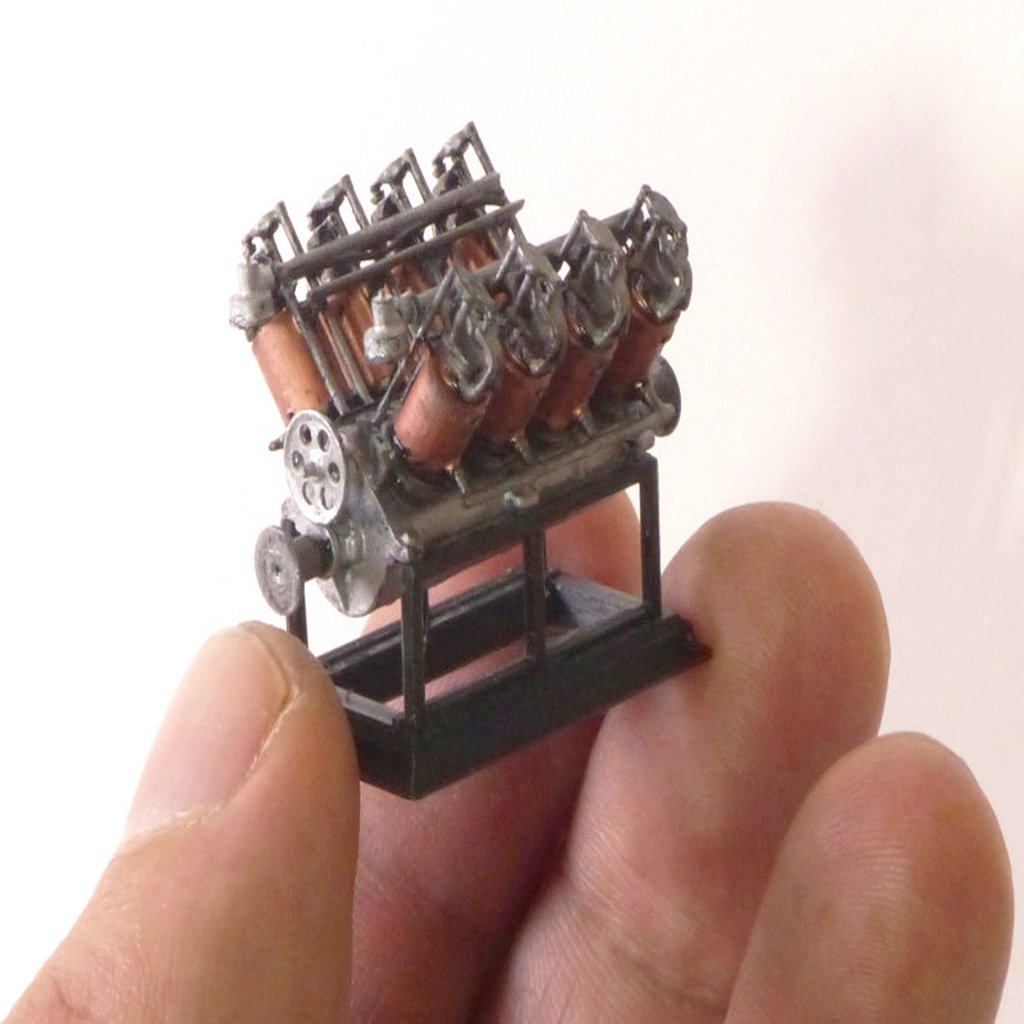
Curtiss "Number 3" V8 Engine (1:25)
thingiverse
The text appears to be a tutorial or guide for creating a scale model of an early water-cooled V8 engine, specifically the Curtiss number 3 engine that powered the Curtiss JN-4 Jenny training aircraft during World War I. Here are some key points from the text: * The model is based on a 3D scan of a surviving engine at the Canada Aviation and Space Museum. * The engine is damaged and incomplete, but most of its basic elements are present. * The model represents a "cleaned up" version of the engine, with missing parts such as oil lines, water lines, spark plugs, electrical wiring, and a gear-driven water pump. * The model has been designed to be printed at 1/25 scale, but a larger 1/8 scale version will also be available. * The model can be printed using either SLA or FDM printing techniques. To assemble the model, you will need small hobby files or emery boards for finishing the prints, CA glue, tweezers, primer, paint, and small brushes.
With this file you will be able to print Curtiss "Number 3" V8 Engine (1:25) with your 3D printer. Click on the button and save the file on your computer to work, edit or customize your design. You can also find more 3D designs for printers on Curtiss "Number 3" V8 Engine (1:25).
